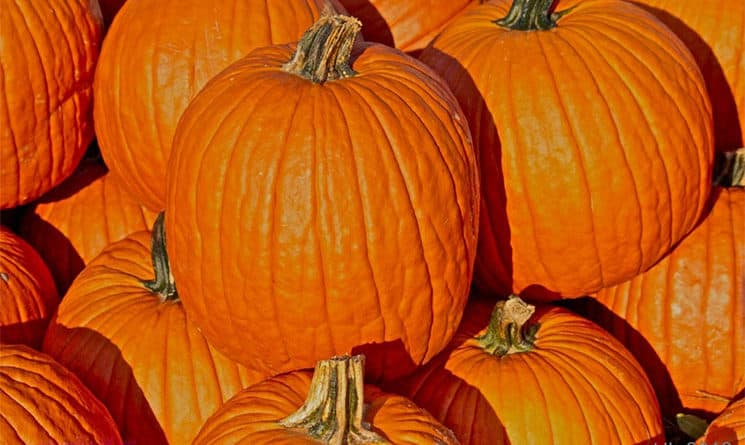Editor’s Note: The University of New Hampshire Cooperative Extension provides weekly gardening columns in which specialists answers questions from local gardeners.
Are your pumpkins already fully orange? Starting several weeks ago, I began getting reports from a handful of farmers and gardening enthusiasts that they were seeing very early ripening in both pumpkins and winter squash.
It was a little bit of a surprise since it was early August, but when I investigated it quickly became clear what may be happening. Most of us have been a little preoccupied dealing with the lack of rain, but when we remember back, it’s also been a fairly hot summer, and that can cause crops to reach maturity earlier than usual. In particular, anyone growing early varieties of pumpkins and winter squash may find their crops maturing earlier than they expect. As the fall decorating season and the kind of weather that makes us daydream about squash soup is still a few weeks away, this may be a little inconvenient.
Fortunately, decorative pumpkins don’t have to be harvested the minute they turn orange. They can be left in the field as long as the plants are green and healthy; normally this means waiting till the first frost is predicted. Cutting the stem off 3-6 inches above the fruit will help prevent plant diseases attacking the fruit through the stem.
Winter squash are a little more complicated. Once the squashes are mature and rinds have started to harden — i.e., you can press your fingernail into them without leaving a mark — they are ready for harvest, and leaving them in the field can lead to loss of quality and even disease or rotting. You’ll also want to trim the stems to an inch or less so they don’t puncture other fruit in storage.
With the humidity and occasional downpours, you may find powdery mildew and other late-season pumpkin and squash diseases in your crops earlier than you are used to seeing it. If this happens, you’ll have to harvest ahead of schedule, because once the powdery mildew reaches the stem, the fruit won’t store well. Curing is the best approach to dealing with this situation.
Curing means that you harvest the fruit and give the rinds a chance to harden off and any wounds to heal before you put them into storage. To cure winter squash and pumpkins, hold them at 80-85 degrees for a week to 10 days. The exception to this is acorn squash, which need to be placed directly into storage and will only last about five weeks after harvest.
Commercial growers will often put the fruit in a greenhouse to cure. Even in a greenhouse, of course, it is a challenge to keep the space at 80-85 degrees at night for 10 days. With or without a greenhouse, the goal is to come as close to those conditions as possible. You can try putting them on a screened porch or some other part of the house that doesn’t tend to be cool. If you are growing white pumpkins, be sure to cure them out of direct sunlight to preserve the color.
Once curing is finished, place pumpkins and winter squash in a cool place, 50-55 degrees, such as an unheated basement, until you are ready to use them. If possible, store them in a different place from apples, which release ethylene gas that will cause the pumpkins to ripen faster.
Depending on the type, most pumpkins and squash will last two to five months in storage, so even if your season seems to be ending early, there’s no reason you can’t have your decorations and favorite fall food items at the right time!
Information in this article came from “Harvesting and Storing of Pumpkins, Winter Squash and Gourds” by Maurice Ogutu (see here), and “Storing Winter Squash and Pumpkins” by Jonathan Schultheis and Charles Averre (see here).
The UNH Cooperative Extension Education Center answers questions about gardening and more at answers@unh.edu, or by calling 877-398-4769 Monday through Friday, between 9 a.m. and 2 p.m.

